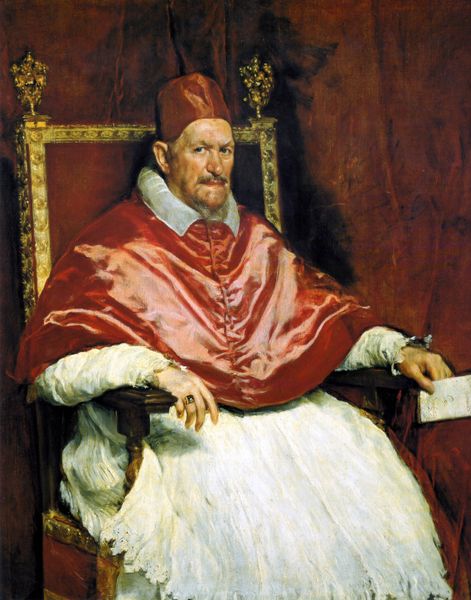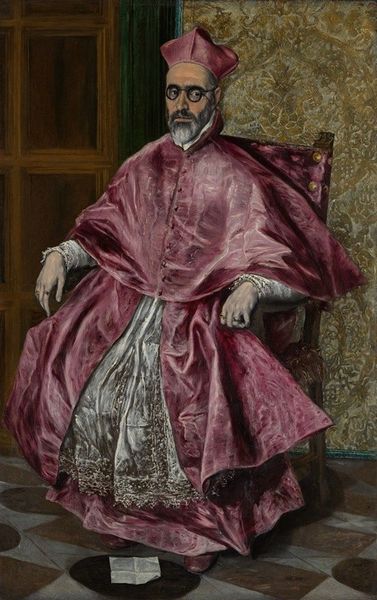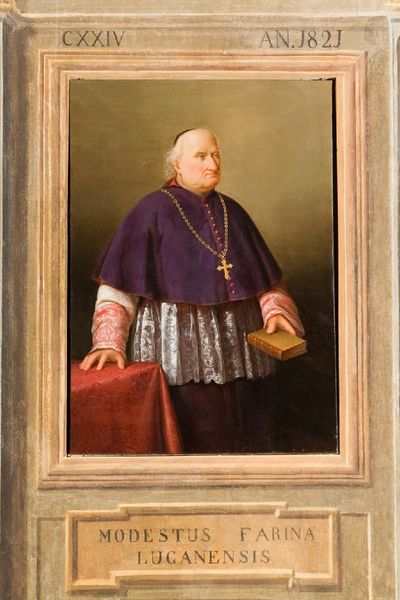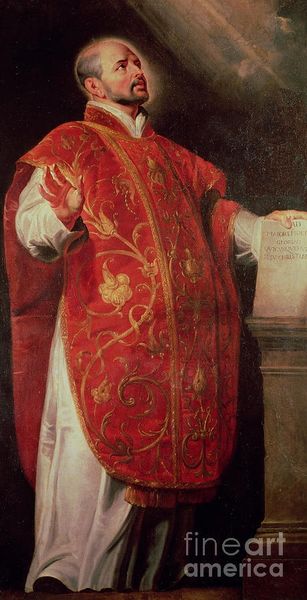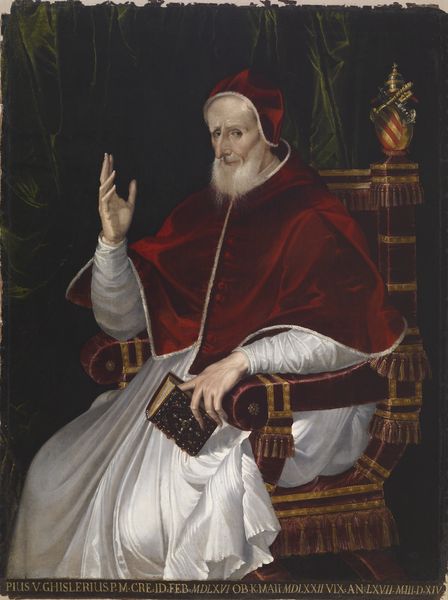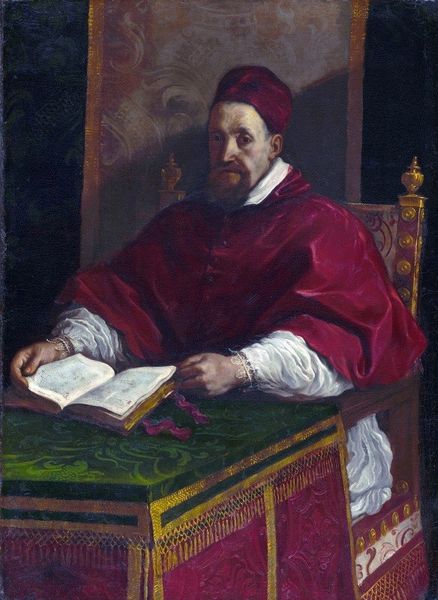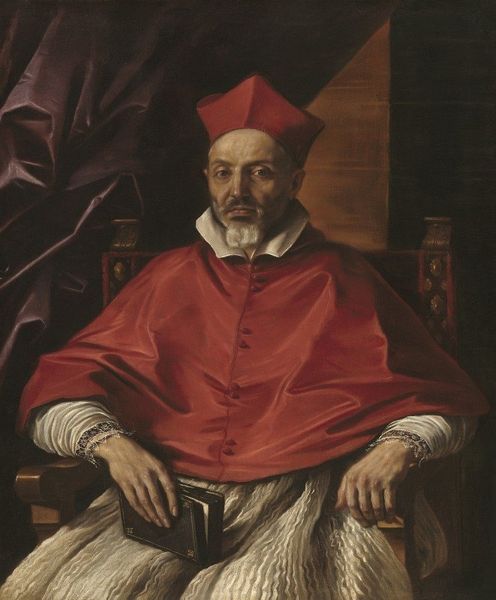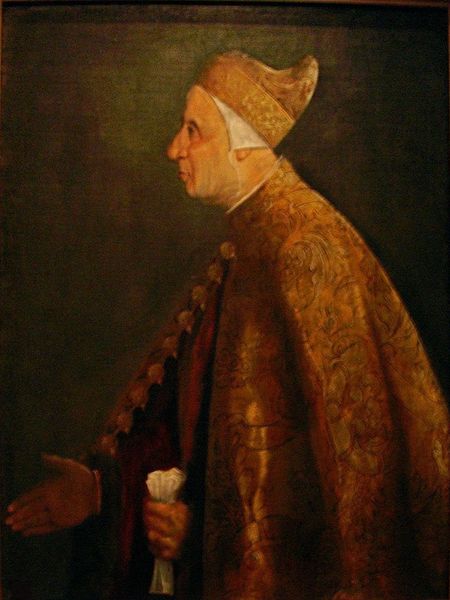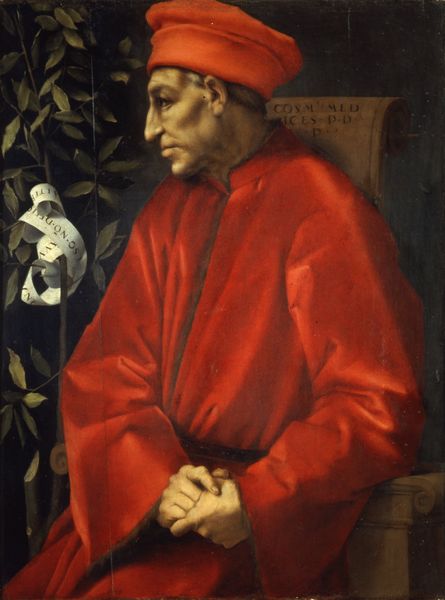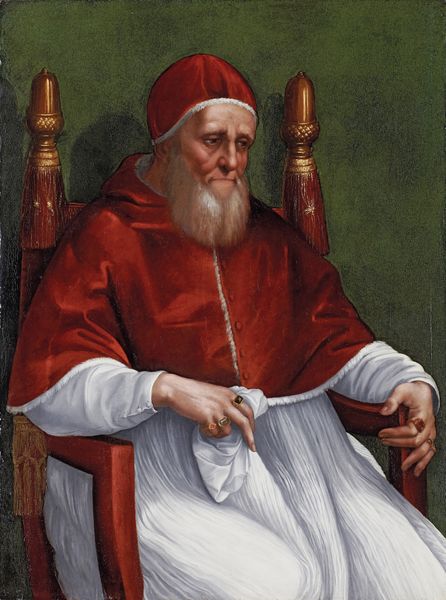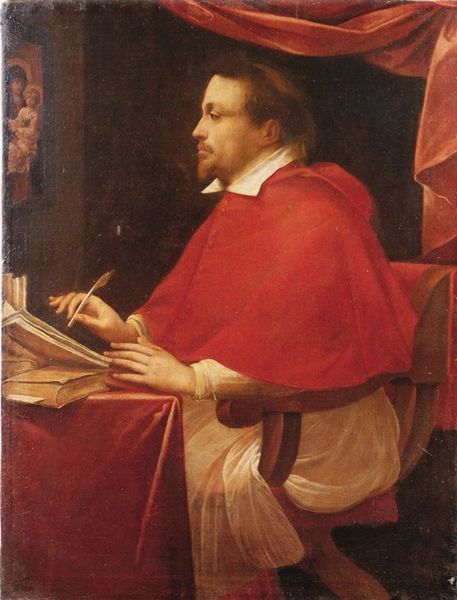
oil-paint
#
oil-paint
#
11_renaissance
#
oil painting
#
history-painting
Copyright: Public domain
Curator: Well, the somberness of the portrait certainly matches my impression of absolute power and possibly a warning to the sitters. Editor: Indeed. We are looking at an oil painting, Portrait of Pope Sixtus IV, likely from the Renaissance period and attributed to Titian, a master of his craft. Curator: Attributed? Are we unsure if this is Titian? It looks very much like his earlier work to me—note the way light describes the folds in the pope's heavy robes, those velvety reds practically lift off the canvas. I imagine the cost of materials alone at the time signaled the papacy's extreme wealth. Editor: Exactly. It is said Titian used specific red pigments in order to portray certain characters in positions of power. But more to your initial reaction. Considering the Renaissance Papacy's political machinations and wars, the severity definitely tracks! A statement of dominance was important for its perception and therefore continued control. Curator: Note the contrast with his pale skin and almost translucent fingers, it really enhances the power structure of the sitter! How the church was separate from the regular man. It is really on show with such material display! Editor: The artist captures the institutional authority brilliantly, doesn't he? How these images played out was everything back then, influencing entire societies. These symbols reinforced everything they held sacred and what their future should look like. Curator: These paintings remind us that what ends up on the walls isn't accidental or neutral, but that there are powerful players involved in its display, just like what is in our galleries now. The consumption is real even in painting. Editor: And its resonance over time continues to invite discourse on the relationship between art, power, and historical memory. We all play our parts and our interpretations just add another layer to the legacy.
Comments
No comments
Be the first to comment and join the conversation on the ultimate creative platform.
